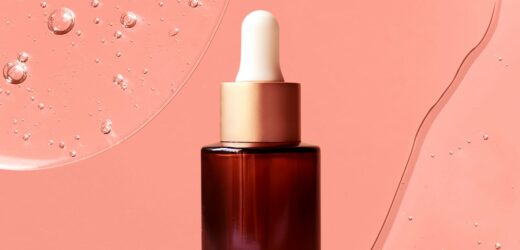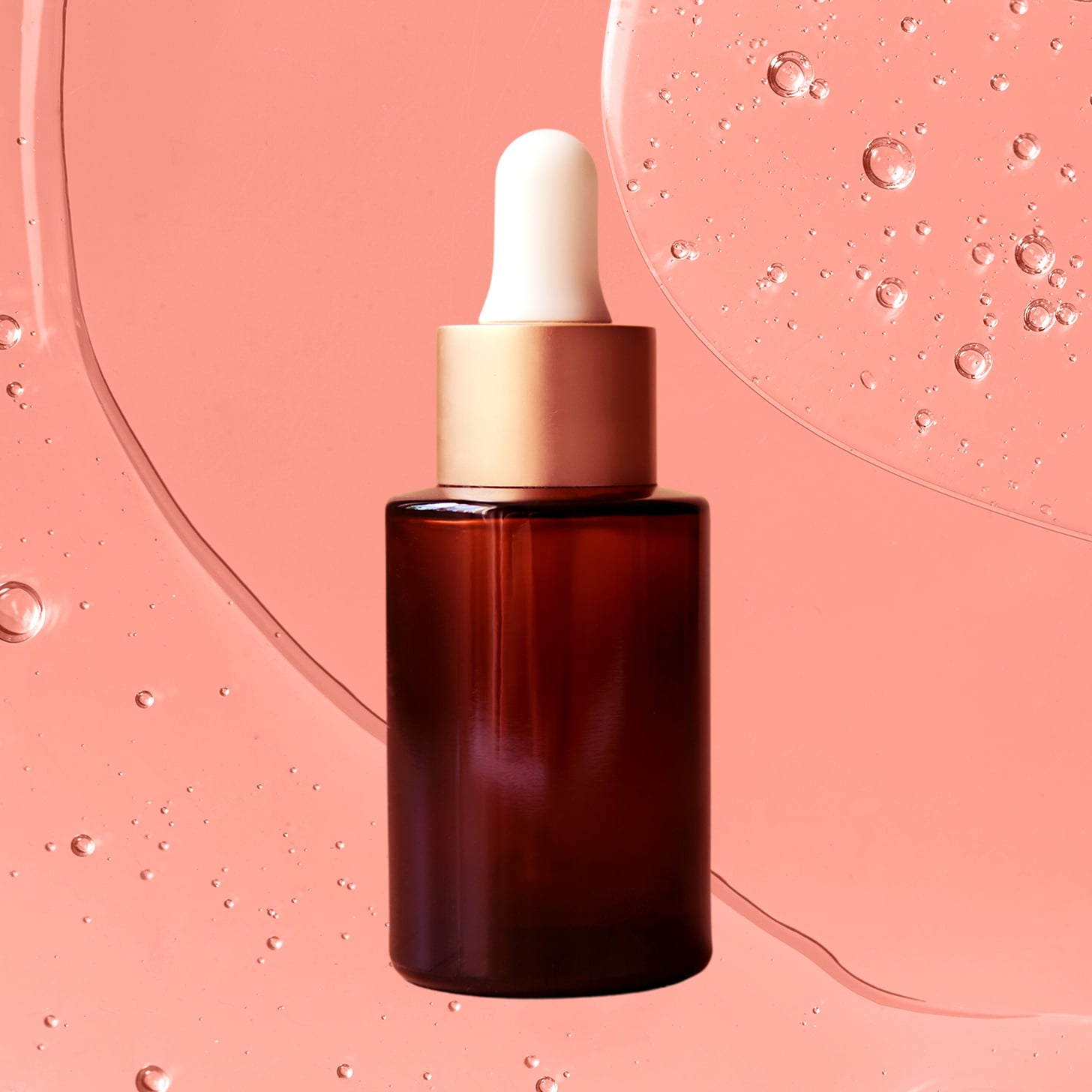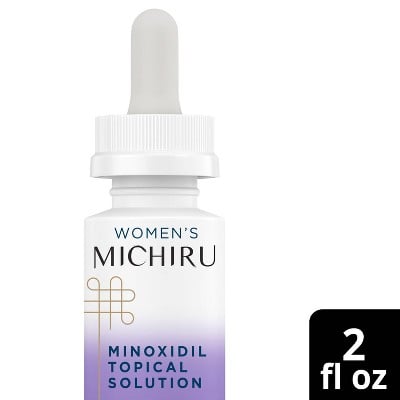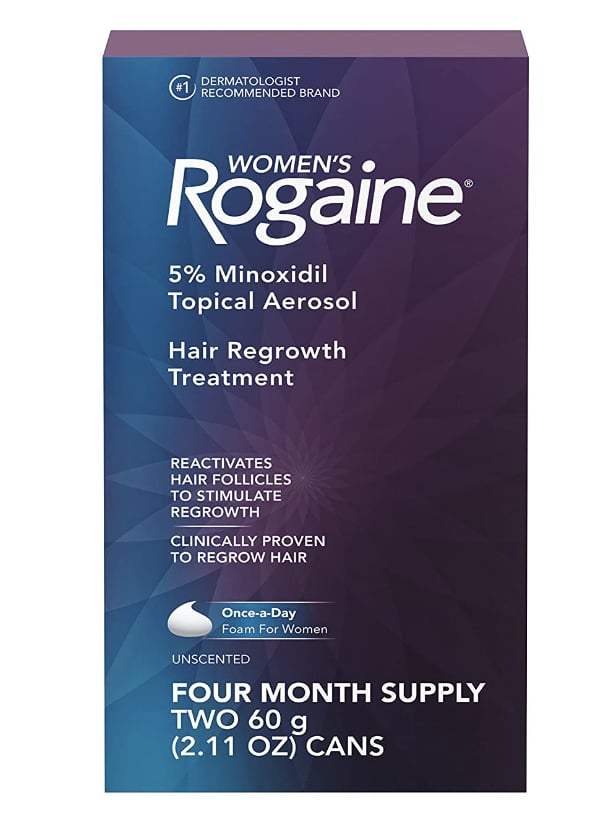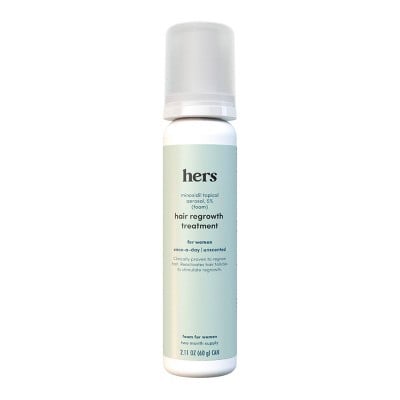- Minoxidil is a common hair growth treatment that comes in oral and topical forms.
- It can address a few different causes of hair loss.
- Minoxidil for women was given FDA approval in 2014.
For anyone experiencing hair loss or shedding, the treatment options available to you can feel murky, at best. In-office solutions are expensive, while at-home products can make you question whether they’re actually working or not. If you paid a visit to a board-certified dermatologist or trichologist, or even just did some research for yourself on the internet, you’ve likely come across something called minoxidil. It’s one of the most common treatments for hair growth, but not many people know the ins and outs of it.
A brief history: treating hair loss was not minoxidil’s initial intent — it was created in the 1980s as a prescription medication for high blood pressure. “Patients taking minoxidil for blood pressure noticed they developed more hair on their body,” Spencer Hawkins, MD, a board-certified dermatologist at Advanced Dermatology and Cosmetic Surgery in East Greenwich, RI, and the editor of HairMedicine.org, tells POPSUGAR. After a few years, in the late ’80s, it was formulated as a topical solution and got FDA approval to address male pattern baldness. “In 2014, minoxidil foam was approved for women with female pattern hair loss.”
But how does it work? What are minoxidil’s side effects? How long does it take to see results? These are just a few of the most common questions asked surrounding the topic. Ahead, two doctors break it down.
How Minoxidil For Hair Regrowth Works
Now, you can find minoxidil in a topical form as an over-the-counter product, no prescription required. “More recently, minoxidil has also been used in a low-dose oral form to provide hair growth without significant effects on blood pressure,” says Dr. Hawkins, but it requires a prescription from a medical provider.
How it works exactly has yet to be proven but experts have their hunches. “It is thought that minoxidil works by increasing the blood flow and therefore, nutrients to the hair follicles, which helps to promote hair growth,” says Dr. Hawkins.
Types of Hair Loss Minoxidil Can Treat
There isn’t just one cause of hair loss — it can actually be broken down into a few different categories. On paper, minoxidil is FDA-approved to treat pattern hair loss, also known as androgenic alopecia, in both men and women. “It helps to stimulate hair growth, reverse balding, and reverse the hair miniaturization process that can happen with age and with androgenetic alopecia,” says Mamina Turegano, MD, FAAD, triple board-certified dermatologist and Michiru brand partner.
But that’s not the full extent of its use. “It is frequently used off-label by dermatologists for telogen effluvium (stress hair loss), alopecia areata (autoimmune hair loss), traction alopecia, and other forms of hair loss,” says Dr. Hawkins.
Minoxidil Side Effects and Risks
As with any medication, minoxidil comes with some risks. “The most common side effect with both the oral and topical form is excess hair growth, also known as hypertrichosis,” says Dr. Hawkins. Additionally, Dr. Turegano adds that “rarely, with topical absorption, women can grow facial hair.”
Both forms can also cause an increase in hair shedding during the first few weeks of use, which both doctors note can understandably be discouraging. “That can just be part of the process of your scalp and follicles getting used to minoxidil,” says Dr. Turegano.
While it’s not common, topical forms of minoxidil can cause irritation, itching, dryness, and redness of the application site on the scalp. “This can be due to the propylene glycol ingredient in the solution,” says Dr. Turegano. The pill form, on the other hand, includes leg swelling, shortness of breath, and low blood pressure as rare potential side effects.
“It is important to read and follow the instructions provided with the medication, and to talk to a doctor before using minoxidil, especially if you have a history of heart disease or other health conditions,” says Dr. Hawkins.
Minoxidil Results: How Long It Takes to Work
It can take three months to start seeing some signs of regrowth in your hair, and after six months of consistent use, the difference should really be noticeable. “Patients generally see the biggest improvement at the vertex and mid-scalp as opposed to the hairline and temples,” says Dr. Hawkins.
It’s worth noting the effects of minoxidil are not permanent. “Continued use is required to maintain results,” says Dr. Hawkins. He likens it to taking blood pressure or cholesterol medication — when you stop using it, it stops working. “Your hair will not be worse off, but your hair will go back to how it was if you never used it,” says Dr. Turegano.
How to Use Minoxidil
Before you begin using minoxidil, talk with your doctor to ensure it doesn’t conflict with any of your existing medications or supplements. “It is also important to talk to a doctor if you are pregnant or breastfeeding, as minoxidil may not be safe for use during these times,” says Dr. Hawkins. To see the effects of minoxidil you’ll need to use it in your beauty routine daily.
Some of our favorite expert-recommended options on the market include Michiru Minoxidil Topical Solution Hair Regrowth Hair Treatment ($30), Women’s Rogaine 5% Minoxidil Unscented Foam ($39), or the Hers Hair Regrowth Foam Treatment 5% Minoxidil ($32).
Source: Read Full Article
